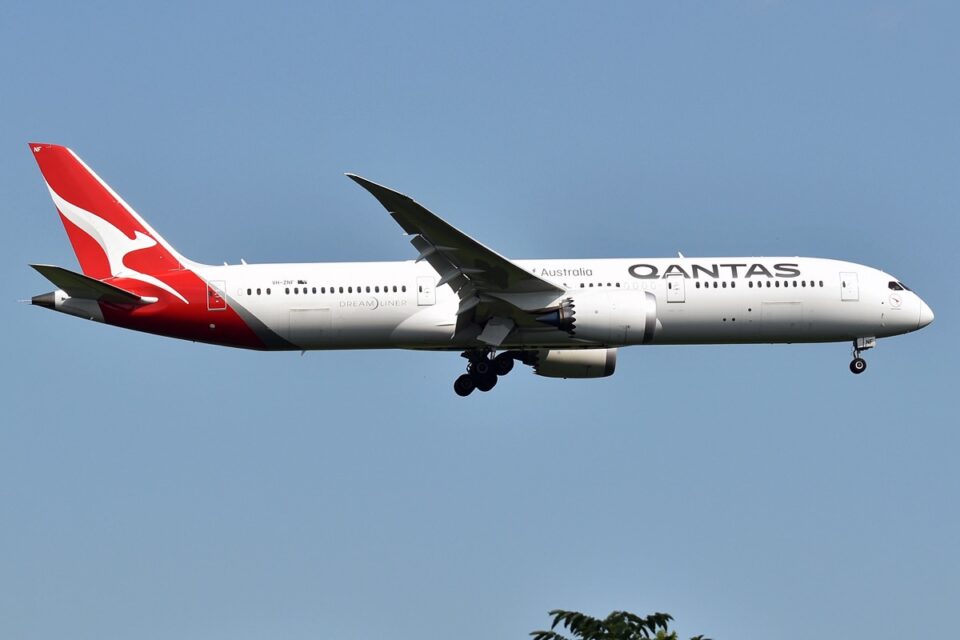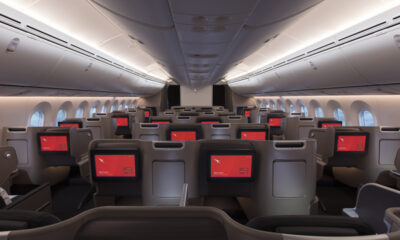Airlines
Qantas Group announces major jobs, training, and growth plans

As it moves from recovery to growth, the Qantas Group expects to create over 8,500 new high-skill jobs in Australian aviation over the next decade.
These additional roles based around the country include pilots, engineers, cabin crew and airport staff, and are driven by investments in new aircraft and increased flying to meet long-term demand through Qantas, Jetstar, QantasLink and Qantas Freight.
Boeing to shift 150 finance and IT jobs to India from the US(Opens in a new browser tab)
The Qantas Group will hire more than 30,000 frontline people over the next 10 years, accounting for regular attrition as well as growth. In total, the Group will have an estimated 32,000 people by 2033 compared with around 23,500 currently.
As it emerged from the pandemic, the Group updated its fleet plan with orders and purchase rights for up 299 narrowbody and 12 widebody aircraft for delivery over the next decade. The capabilities of these next-generation aircraft will reshape the Group and its network.
QANTAS GROUP ENGINEERING ACADEMY
The national carrier has today announced that it will establish the Qantas Group Engineering Academy in Australia, with capacity to train up to 300 engineers a year.
The Academy will provide aviation engineers for the Qantas Group as well as the broader aviation industry, including defense contractors and general aviation – two areas with high demand for these skills. A particular focus will be encouraging more women to consider a career as an aircraft engineer.
Qantas will make a multi-million investment to establish the Engineering Academy, which is expected to open its doors to the first students in 2025. Entry-level classroom training for aviation engineering takes at least 12 months, with further on-the-job training required to move through various levels of accreditation. A fully licensed aviation engineer typically takes a minimum of five years of practical and classroom training.
A decision on location for the Academy will be made as part of the final design, expected to be determined by the end of 2023.
Qantas has launched an online registration form for people interested in positions at the Engineering Academy: www.qantas.com/engineeringacademy
To search jobs that are currently available click here.
TEN-YEAR RECRUITMENT NEED
The 8,500 new Australia-based operational positions the Qantas Group will create over the next decade include:
| Cabin Crew | 4,500 |
| Pilots | 1,600 |
| Engineers | 800 |
| Other ops roles (e.g. airports) | 1,600 |

Airlines
Air India’s last VVIP Boeing 747 now found a new home in USA

In a symbolic transition marking the end of a storied chapter in aviation history, Air India bid farewell to its last remaining Boeing 747-400 jumbo jetliners, once revered for ferrying dignitaries including prime ministers, presidents, and vice presidents.
The sale of these iconic aircraft to AerSale, a company based in the United States, signals the closure of a remarkable era for the airline.
The decision to part ways with the Boeing 747s was driven by practical considerations. Tata Group, the new custodian of airindia flights, deemed these majestic planes uneconomical to operate in today’s aviation landscape. As such, out of the four sold, two will be repurposed into freighters, while the remaining pair will be meticulously disassembled to harness their valuable parts.
The transaction, orchestrated by Mumbai-based Vman Aviation Services, underscores the strategic shift in Air India’s fleet management strategy under its new ownership. Tata Group’s decision to divest from the 747s reflects a commitment to optimizing operational efficiency and aligning with contemporary industry standards.
Skytech-AIC, a UK-based remarketing firm engaged by Tata Group, facilitated the sale of these iconic aircraft, marking the conclusion of their illustrious service with Air India. The airline’s last flight featuring the Boeing 747 took to the skies between Delhi and Mumbai in March 2021, encapsulating decades of distinguished service and indelible memories.
The allure of used aircraft parts continues to resonate across the aviation sector, offering operators a cost-effective alternative without compromising on quality or performance. The transfer of these aircraft to AerSale not only ensures their continued utility but also underscores the enduring legacy of Air India’s fleet.
Airlines
A software error caused grounding the entire airline fleet

On Wednesday, the U.S. Federal Aviation Administration (FAA) issued a ground stop advisory for all Alaska Airlines and subcarrier flights due to a software issue, disrupting travel plans for passengers.
The FAA directive, which prohibited the departure of Alaska Airlines mainline and subcarrier flights, was implemented as a precautionary measure following the detection of the software problem. The ground stop was initiated after Alaska Airlines encountered difficulties during a system upgrade related to the calculation of weight and balance for their flights.
As a result, the airline opted for a temporary suspension of all its operations to address the issue and ensure passenger safety. Alaska Airlines promptly issued a statement acknowledging the incident and expressing their commitment to resolving the matter swiftly. “This morning we experienced an issue while performing an upgrade to the system that calculates our weight and balance.
Out of an abundance of caution, we requested a ground stop for all Alaska and Horizon flights, which was instituted at approximately 7:30 a.m. PT,” the statement read. Passengers affected by the disruption voiced their concerns on social media platforms, prompting Alaska Airlines to reassure them of their efforts to minimize the inconvenience and expedite the resumption of flights.
Following approximately an hour-long interruption, the FAA lifted the ground stop order, allowing Alaska Airlines and its subcarriers to resume normal operations. However, it was clarified that SkyWest, which provides regional service for Alaska Airlines and other carriers, was exempt from the ground stop and continued its flights unaffected.
Aerospace
Which is bigger 777x or 787 aircraft ?

The 777X is a new series of the Boeing 777 family and is designed to be larger and more efficient than its predecessor. It features two variants: the 777-8 and the 777-9, being the larger of the two.
The Boeing 777X emerges as the larger sibling within the Boeing family, representing a significant leap forward in both size and efficiency. Comprising two variants, the 777-8 and the 777-9, the latter takes the crown as the larger of the two. With its expansive fuselage and impressive wingspan, the 777X is tailored for long-range journeys and boasts a substantial passenger capacity.
On the other hand, the Boeing 787, affectionately known as the Dreamliner, occupies a niche in the market as a smaller yet formidable aircraft designed for medium to long-range flights. Its distinguishing feature lies in its composite fuselage, a technological marvel that renders it lighter and more fuel-efficient compared to conventional aluminum counterparts. The Boeing 777X is larger than the Boeing 787 aircraft.
When it comes to passenger capacity, the 777-9 reigns supreme, typically accommodating a sizeable contingent of 400-425 passengers in its standard configuration. In contrast, the 787, with its more modest dimensions, typically carries between 240-290 passengers, depending on the variant and layout.
One of the remarkable innovations introduced with the 777X is its folding wingtips, a feature designed to address the logistical challenges of accommodating such a large aircraft in conventional airport gates. These folding wingtips enable the 777X to retract its wings, allowing it to fit into gates designed for smaller aircraft while still reaping the benefits of an extended wingspan during flight, thereby enhancing fuel efficiency and operational flexibility



























